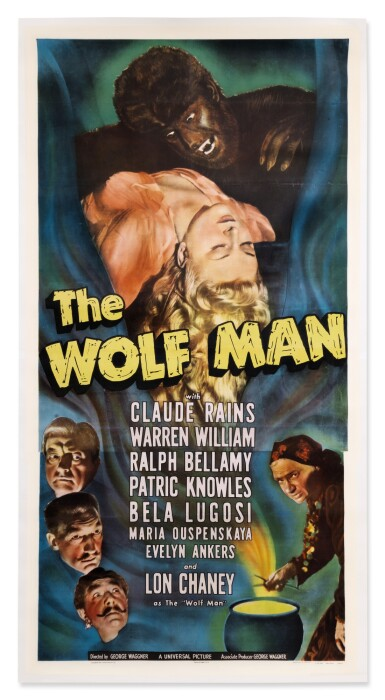PEOPLE
From silent-era icons to today’s creators, People explores the lives that shaped Hollywood—its visionaries, rebels, and dreamers. Each story reveals the artistry and ambition behind the fame, reminding us that the heartbeat of the industry has always been human.
Fan Magazine Covers...
Before movie trailers and digital campaigns, Hollywood sold its dreams through ink and illustration. The magazine covers of the classic film era—Photoplay, Motion Picture, Screenland, Modern Screen—were miniature works of art, painted and photographed with luminous care. Each cover told a story: a star caught in a moment of glamour, mystery, or longing. Together, they form a gallery of Hollywood’s golden mythology, when brushstrokes and color carried as much allure as the films themselves. These covers weren’t just promotion—they were portraiture, transforming celebrity into art and memory into legend.

Miriam Hopkins

Joe Brown

Jean Harlow
Artists, innovators, and personalities...
Hollywood has always been built on its people—the dreamers, creators, and visionaries whose faces and voices define each generation. In this section, we spotlight the lives behind the legends, from silent-era stars who shaped the grammar of film to the contemporary artists carrying that legacy forward. These portraits trace ambition and vulnerability, triumph and reinvention, revealing how fame and artistry intertwine across time. Whether forgotten or celebrated, each name adds another thread to the tapestry of a city forever chasing its own reflection.
Maria Ouspenskaya: The Actress Who Brought Old World Grace to Hollywood Horror
Few actresses in Hollywood’s Golden Age carried the weight of centuries in their eyes quite like Maria Ouspenskaya. With her measured voice, stern bearing, and luminous presence, she could turn a few lines into prophecy — and did, most memorably, in 1941’s The Wolf Man.
Born in Tula, Russia, on July 29, 1876, Ouspenskaya was trained in the rarefied halls of the Imperial School of Dramatic Art in Moscow, where she studied under the legendary Konstantin Stanislavski, founder of the Moscow Art Theatre. She became one of his earliest disciples, absorbing the principles of emotional truth and psychological realism that would later revolutionize Western acting.
In 1922, she emigrated to the United States, escaping post-revolutionary turmoil and joining the Moscow Art Theatre’s American tour. Settling in New York, she co-founded the School of Dramatic Art with fellow émigré Richard Boleslavsky, teaching what would become the foundation of “Method Acting.” Among her students were future stage and screen luminaries who credited her with bringing the discipline of art to the chaos of ambition.
Hollywood discovered her late. Ouspenskaya made her film debut at nearly sixty, and within a year was nominated for an Academy Award for Best Supporting Actress in Dodsworth (1936), where her brief but unforgettable performance as a worldly European countess captivated audiences. A second nomination followed for Love Affair (1939), proof that gravitas, not glamour, could command the screen.
Yet it was as the gypsy mystic Maleva in The Wolf Man (1941) that Maria Ouspenskaya entered the realm of legend. Her voice — low, deliberate, and touched with an accent that seemed carved from old folklore — gave the film its poetry and its curse:
“Even a man who is pure in heart, and says his prayers by night...”
The line, like the actress, became immortal.
Ouspenskaya continued teaching and performing through the 1940s, revered in both Hollywood and New York as a bridge between the classic Russian stage and modern American acting. But her final years were shadowed by ill health and financial strain. In 1949, after accidentally falling asleep while smoking, a fire broke out in her Los Angeles apartment. She suffered severe burns and died days later at Cedars of Lebanon Hospital, aged seventy-three.
She is buried at Forest Lawn Memorial Park, Glendale — an ocean away from Moscow, but within sight of the studios that made her eternal.
She brought to Hollywood the soul of the theatre — and to the theatre, the immortality of film.



Einar Hanson (1899-1927) Hollywood's Lost Nordic Star
Handsome, urbane and poised for stardom, Swedish actor Einar Hanson was a rising star of the silent screen who was killed at the peak of his youth and promise. He was born in Stockholm and after working as a stage actor in his home country was spotted by director Mauritz Stiller, who cast the young actor in The Story of Gunnar Hede (1923). Hanson's sensitive and dashing portrayal in that film was quickly likened to that of the romantic leads of the era. After a series of European films opposite Greta Garbo, Hanson went to Hollywood with Stiller and Garbo, and worked with such leading ladies as Corinne Griffith, Pola Negri and Clara Bow in Into Her Kingdom (1926), Barbed Wire (1927) and Children of Divorce (1927). With a full film slate, Hanson was in studios' sights to be the next Rudolph Valentino, when he was killed in a car accident on June 3, 1927, on the Pacific Coast Highway, near Topanga Canyon. The 27-year-old was found beneath his overturned car with his Airedale terrier at his side, guarding his body until he was discovered. Hanson died a few hours later in Santa Monica. His short career is one of the more tragic what-ifs of Hollywood history.
What we do
We celebrate Hollywood—past and present. Through history, biography, and review, this blog explores the people, films, and places that shaped the dream factory, preserving its stories while connecting them to today’s entertainment world.